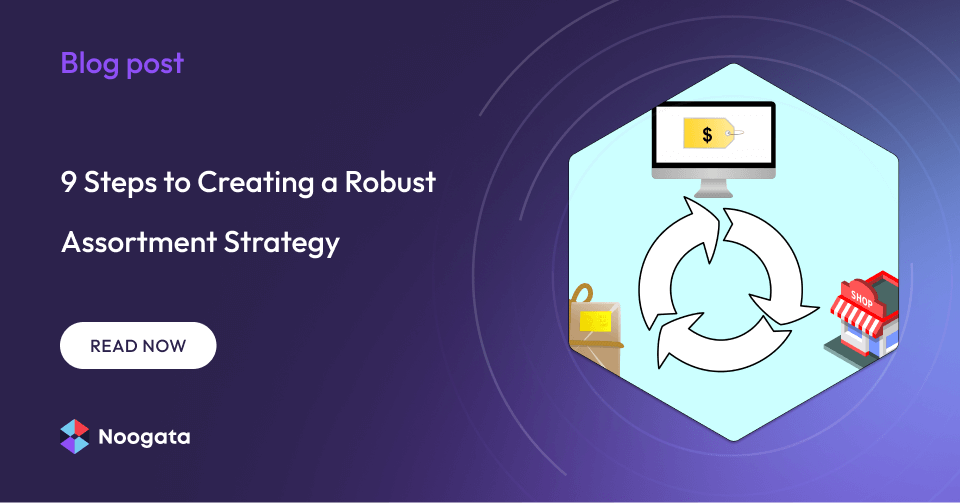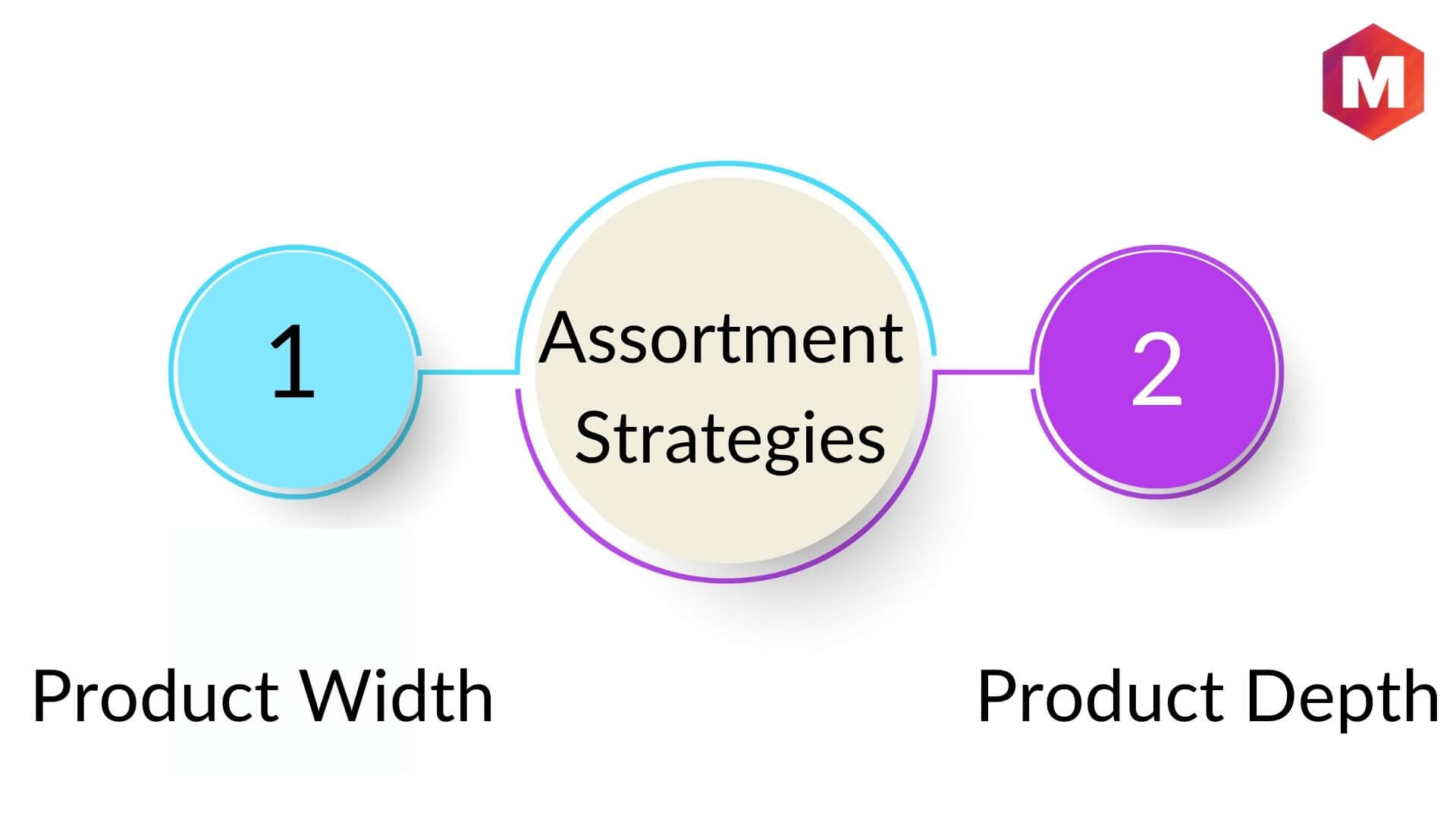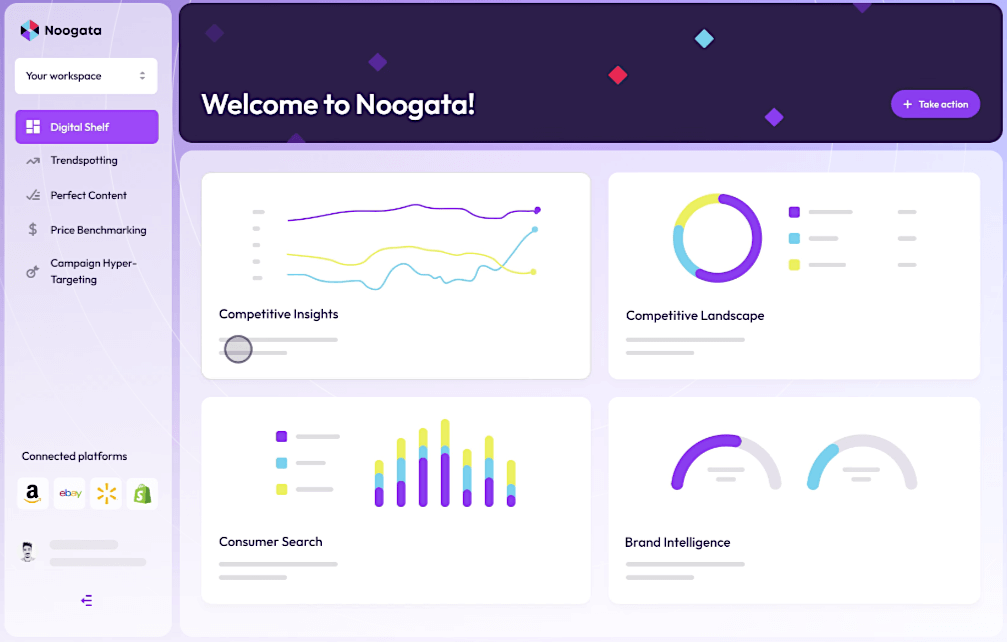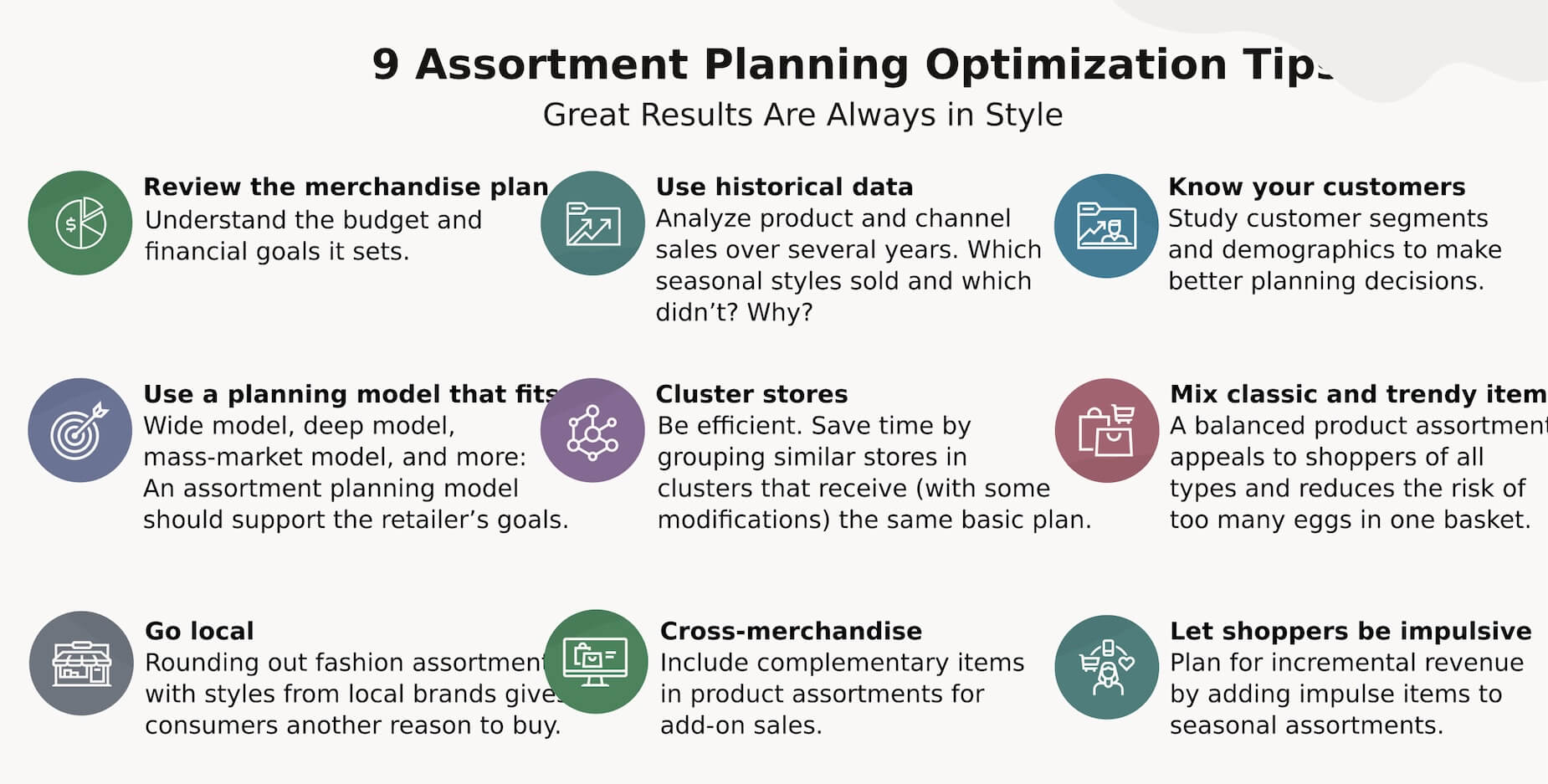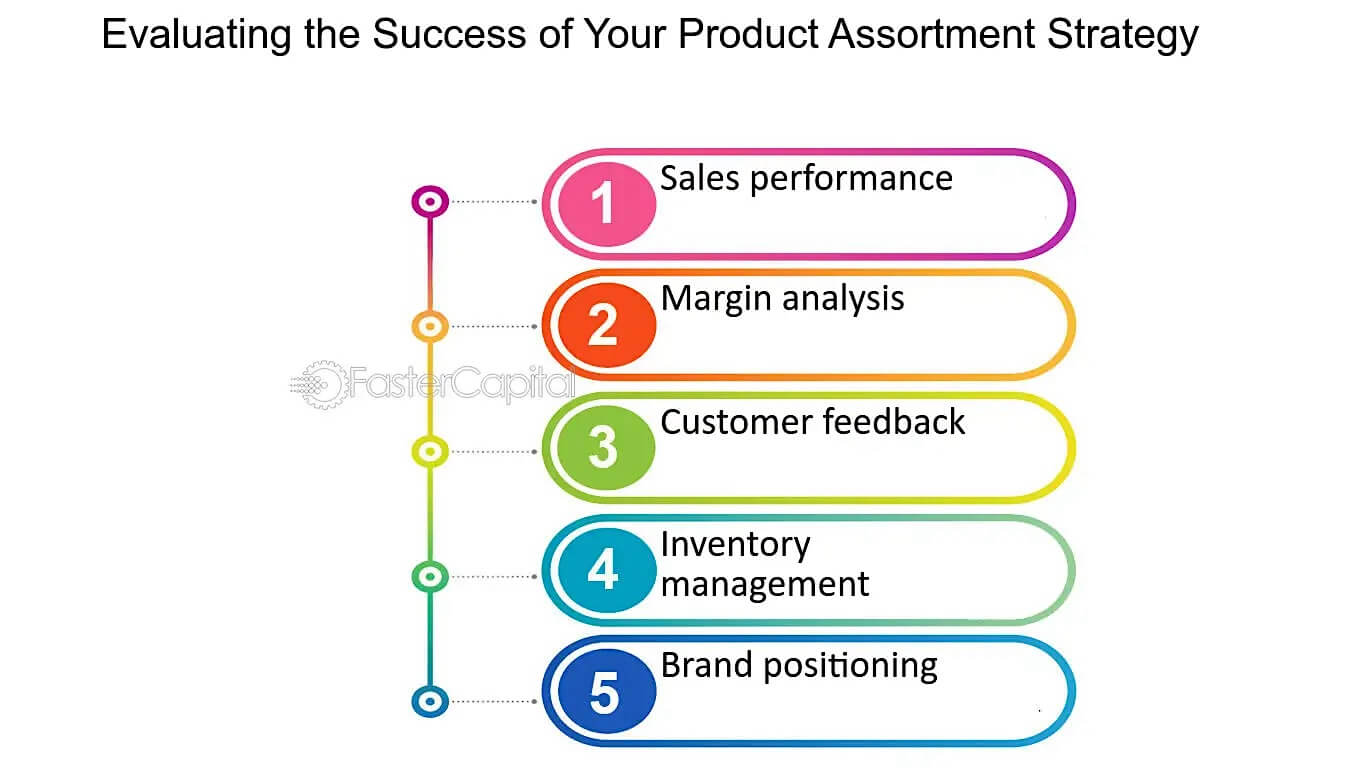The idea of the ‘endless’ digital shelf sounds good in theory—any product you could want is yours to purchase, if you just keep scrolling! But as an eCommerce merchant, you don’t want customers to scroll endlessly. You want them to find what they’re looking for and make a purchase before they log off from exhaustion.
Determining the optimal variety of products to offer can be a delicate balancing act. While many shoppers will tell you that a vast selection is important to them, one out of ten will abandon their carts when faced with overwhelming choices. This statistic tells us that just because you can stock everything online doesn’t mean you should.
Using a robust assortment strategy to curate your product selection will build customer trust, prevent decision fatigue, and reduce cart abandonment. We’ve got nine great tips to help you create an assortment strategy that will increase sales and revenue.
What is an assortment strategy, and why do you need one?
An assortment strategy refers to the guidelines you use to optimize your assortment plan. The plan encompasses all your decisions about your eCommerce store’s products, such as purchasing, pricing, promoting, visual merchandising, localization, and inventory management. The strategy is what will steer those decisions in the best interests of your business model and target audience.
There are two primary elements of an assortment strategy:
- The first is how wide (or broad) your product offerings are: How many different types of products you sell.
- The second is product depth: How many versions of the same product type you sell.
Your assortment strategy ensures you carry products your customers want and are likely to buy. It also ensures that you don’t waste money and warehouse space on products they aren’t really interested in.
What are the most common assortment plan strategies?
These are the most frequently encountered types of assortment strategies:
|
Assortment Strategy |
Description |
Example |
| Wide | This assortment includes a variety of product types and categories. | A shoe store that sells a few different designs from many different brands would have plenty of width within its category. |
| Deep | A specialty shop offering an extensive selection of a single product type has a deep assortment. | A shoe store that sells only Nike, but carries every line they make in all different sizes and colors. |
| Localized | Products are curated with customer demographics and purchasing trends specific to a particular geographic location in mind. | A surf shop near a popular tourist beach would have a localized assortment. |
| Mass-market | This strategy tries to appeal to as broad a target audience as possible by offering a deep and wide product selection. | Big-box stores often aim for a mass-market assortment strategy. |
| Ethical/Sustainable | Products are chosen based on ethical or environmentally friendly manufacturing principles. | Stores that prioritize sustainability policies by selling fair trade, organic, or eco-friendly products. |
| Premium | An assortment that features the most expensive or highest-quality brands within its categories. | A boutique that sells luxury fashion brands or high-end electronics. |
| Value-focused | Affordable products that provide good value for the price are emphasized. | Discount retailers or stores that highlight budget-friendly options. |
| Seasonal | Products are tailored to specific times of the year or weather patterns. | Stores that stock winter coats in colder months or holiday decorations during festive seasons. |
| Event-based | Assortments curated around specific holidays, events, or promotions. | Retailers offering back-to-school supplies or Black Friday deals. |
9 Steps to Create a Robust Assortment Strategy
Ready to create the ultimate digital shelf of expertly curated products? Here are nine steps that will help you succeed.
1. Set Clear Objectives
Your objectives define your strategy’s guiding principles and priorities, so your first step is to determine exactly what you hope to achieve with your assortment plan.
- For a new business, this might be acquiring new customers.
- For an established business, it might be maximizing profit margins.
- For a business looking to grow, the objective might be to expand into new product categories.
You might also opt for small, specific goals, like increasing conversions on a particular sales channel. Make sure your assortment objectives support your overall business goals.
2. Analyze Existing Assortment (if applicable)
If you’ve got an existing product assortment that you’re looking to revamp, take some time to evaluate it on both a qualitative and quantitative level. Identify its current strengths, weaknesses, and how your customer base perceives it.
If customers are bouncing because they’re looking for a deep assortment and you’re giving them a wide one, now is the time to figure that out. You can complete this kind of analysis faster and more accurately with Noogata’s Assortment Intelligence tool, which applies AI analytics to real-time data to provide insights into the ideal assortment for your target audience.
3. Conduct Thorough Market Research
Once you’ve analyzed your current inventory, it’s time to look at the market as a whole. By identifying and analyzing emerging consumer trends, competitor strategies, and customer search behavior, you can better understand what will appeal to the customers you’re trying to reach.
Research can also help you discover hidden gem products and underserved market niches, giving you new ideas and opportunities for growth. However, AI-powered intelligence solutions can provide deeper, actionable insights that help you outperform the competition.
4. Develop a Strategic Assortment Framework
Build the framework of your strategy by deciding what ‘type’ it will most resemble in terms of width, depth, and other potential factors. The groundwork you’ve laid with the previous three steps should guide your choices here.
If you’re pivoting to a different type of assortment, make sure it aligns with your branding and the target audience segments. Your data and analytics must support the idea that this will positively impact sales and other metrics you want to improve.
5. Financial Modeling
It’s time to crunch your numbers. Based on your new anticipated product mix, project your expected profit margins, estimate your supplier costs, and calculate your return on investment.
Even if there’s demand for a different product assortment, it only makes sense to implement it if it will serve your fiscal goals. If the cost of changing your current assortment is too high, you should reconsider the structure or timing of your strategic plan.
6. Product Sourcing and/or Development
The next question is, where will all your products come from? Supply chain issues can derail even the best-laid assortment plans, so research your options carefully.
Choose reliable suppliers who can maintain sufficient inventory to meet customer demand, even during peak sales seasons. If you develop and manufacture your own products, ensure you have production capacity commensurate with your strategic vision.
7. Create Compelling Merchandising and Content
Once you’ve devised a brilliant assortment plan, you have to let people know it exists and highlight its defining qualities.
For example, if you’re the most ethically sourced coffee company in the state, carry a legendary wide variety of vinyl records, or are the only online nursery that sells all fifty species of Monstera, let your brand marketing proclaim it!
You’ll attract and convert customers by emphasizing the best aspects of your assortment in your marketing campaigns, using high-quality product visuals, writing informative and engaging descriptions, and following SEO best practices.
8. Launch and Monitor
Before your new product assortment plan starts turning into actual inventory, you need to define the key performance indicators (KPIs) that will determine whether or not it’s succeeding at meeting your objectives.
Once the launch has been executed, establish a regular cadence for reporting and data analytics. With these final preliminaries in place, it’s time to start placing orders, stocking inventory, and monitoring the results of your efforts.
9. Iterate and Adapt
Life is unpredictable, consumer trends can change rapidly, and sometimes, a great strategy doesn’t work out as planned. Above all else, you must stay agile and responsive to market shifts, customer feedback, and sales metrics.
If your KPIs tell you that your new assortment isn’t meeting the goals you set for it, don’t be afraid to change course. You can keep working toward optimal results by continuously refining your assortment strategy based on new data.
Strategize a Perfect Assortment with Noogata
Crafting a well-defined assortment strategy is crucial for eCommerce success. It begins with understanding your target audience, conducting thorough market research, and analyzing your current offerings. Aligning your product selection with your overall business goals involves considering factors like product width, depth, and seasonality. This allows you to curate a perfect assortment that resonates with customers and drives sales.
Noogata’s Assortment Intelligence can revolutionize this process. Leveraging AI and real-time data analytics, Noogata delivers deep insights into customer preferences, emerging trends, and competitor strategies. These insights help you to make informed decisions about product selection, pricing, and promotions, optimizing your assortment for maximum impact. With Noogata, you can uncover hidden opportunities, enhance your competitive edge, and achieve sustainable growth.
Ready to transform your eCommerce store? Schedule a free Noogata demo today.
